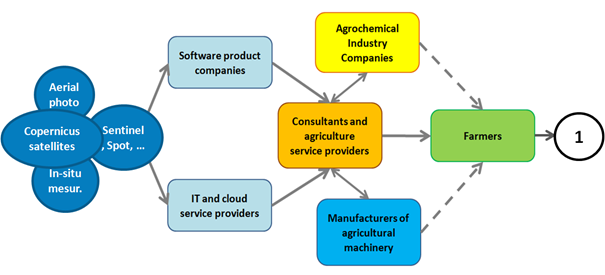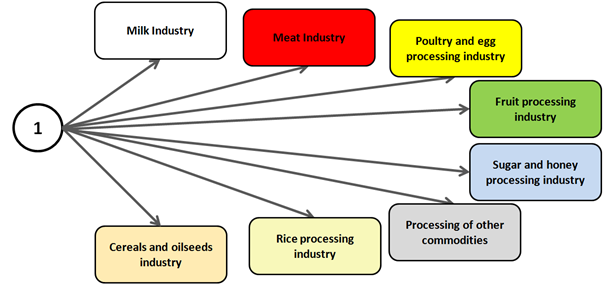Mentors: Karel Charvat, Vaclav Safar
The main objective of EO4AGRI is to catalyse the evolution of the European capacity for improving operational agriculture monitoring from local to global levels based on information derived from Copernicus satellite observation data and through the exploitation of associated geospatial and socio-economic information services. EO4AGRI works with farmers, farmer associations and agro-food industry on specifications of data-driven farming services with a focus on increasing the utilization of EC investments into Copernicus Data and Information Services (DIAS).
The EO4AGRI project methodology is a combination of community building; service gap analysis; technology watch; strategic research agenda design and policy recommendations; dissemination (including organization of hackathons).
The Ideathlon will be focused on the relation of Earth Observation and AgriFood industry. The goal of the discussion will be to validate the existing recommendation from EO4Agri on one side, but on the other side to find new challenges until now not recognised.
EO4Agri identified the next groups of stakeholders in agrifood sector:
- Precision Agriculture
- Farmers
- Advisors and Service organizations
- Machinery
- Agrochemical providers
- Food sector
- Food producers
- Resellers
Users of Earth Observation data in Precision agriculture, respectively in part Agro-Industry group, can be divided according to whether they are data processors or consumers of results produced by data processors companies. In the first group are: service IT providers, software producers and consultants, and service organizations in the rank of Earth Observation, aerial photogrammetry, drone application, phytopathology, agronomy, interpretation of vegetation data from satellite and aerial images, etc. The second group consists of farmers, engineering and environmental agricultural companies, agronomists, machinery manufacturers and input providers (fertilizers, chemicals). Members in both of these groups must collaborate in order to develop all required applications. Then all will benefit from these applications: farmers can make informed decisions regarding their crops and advisors can sell services to farmers and input providers can use weather and soil maps to predict the demand for fertilizer.
Earth Observation for Precision Agriculture due to its complexity needs to be supported by a full Value-Added Chain, where a farmer is its final point. See the next images:
The food sector is complex and includes different types of producers, where could be different requirements on EO technologies’
As part of the Food sector, we can also include Food resellers, their requirements can be similar to the requirements of part of the food sector. Generally, the interests of the food sector could be divided into two groups:
- Producers of niche or specific products with high requirements on input materials like producers of pasta, beer, etc. with a strong focus on the quality of production
- Global food players and resellers, who are mainly interested to have an overview of the situation on the global market of agriculture products
During Ideathlon we will try discussed such questions like:
- What are the needs of single stakeholders groups?
- What is the relation of these groups of stakeholders?
- Who are real drivers among stakeholder in the agrifood sector for utilisation of EO?
- What are the requirements in satellite technologies and also in processing?
- What are the biggest problems?
- What are dreams for the future?
- Which solutions are now missing?
The results of this analysis will be based for a future recommendation for industry, but also for EC.


